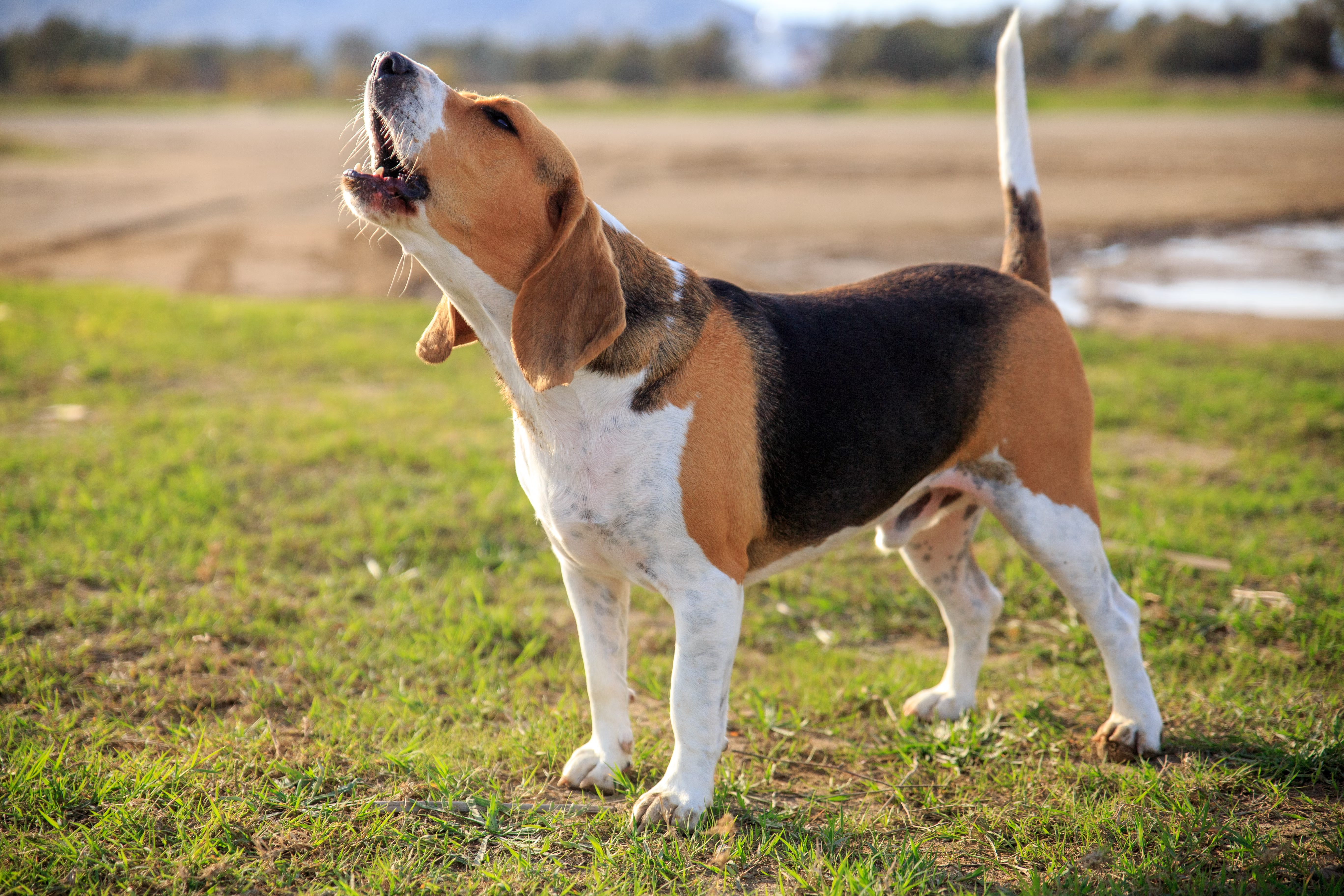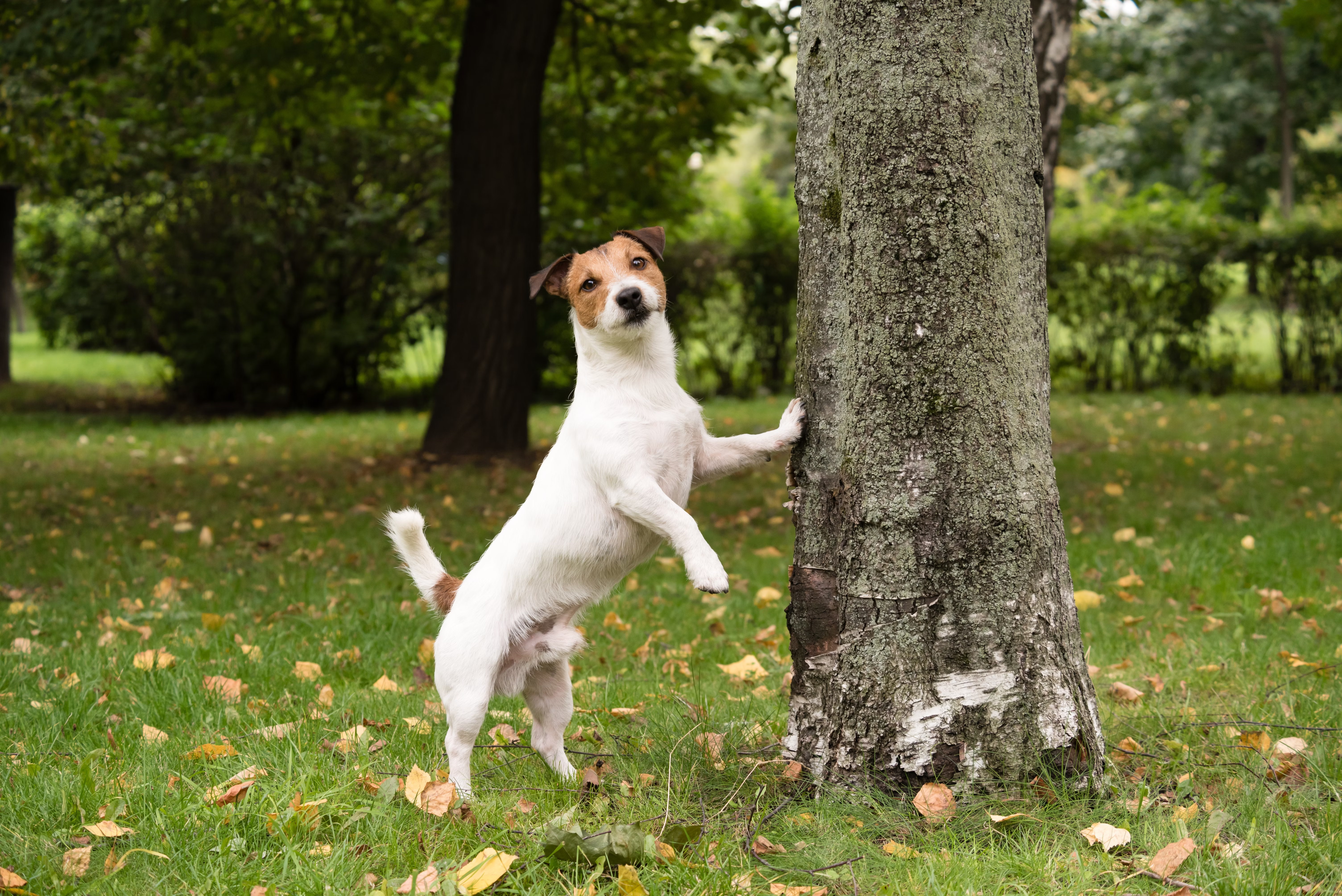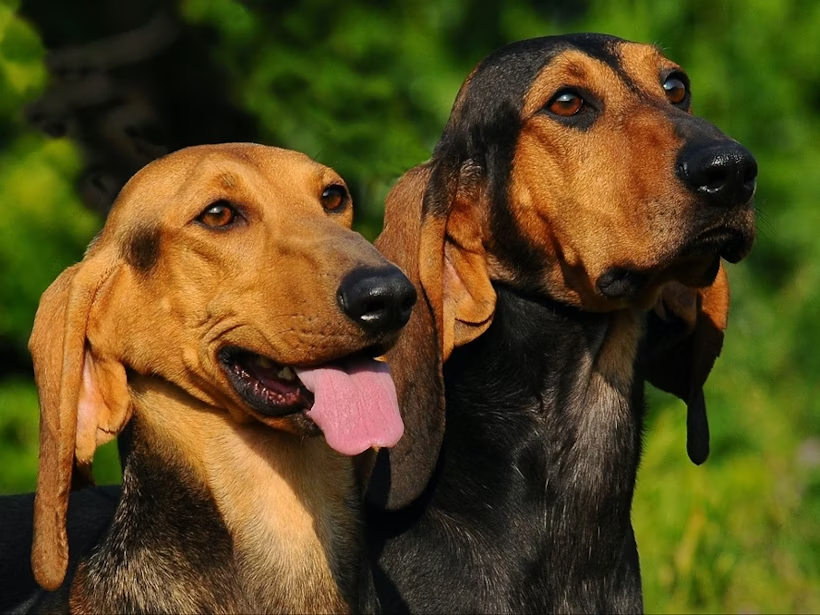Ever wonder why some dogs bark at every little noise while others barely make a sound? Or why Huskies “talk” and Beagles bay? A dog’s vocal habits stem from a combination of their breed, genetics, environment, and experiences. In this post, we’ll dig into common dog vocalisations, why dogs bark, and why some breeds are more vocal than others.
Types of dog vocalisations
Dogs communicate in several different ways, including body language and scent cues. Unlike with humans, vocalisation isn’t the primary mode of communication for dogs, but it still plays an important role in how they express their feelings and needs. Following are the most common ways dogs use their voice.
Barking
Barking is a versatile form of communication. Dogs may bark to alert you to something unusual, express excitement, ask for attention, or even signal frustration. Barking frequency and intensity can vary widely by breed, with less ancient breeds tending to bark in a wider range of circumstances.
Howling
Howling is a more primitive vocalisation linked to a dog’s wolf ancestry. It can be triggered by high-pitched sounds (like sirens or music) or used to signal distress, loneliness, or territorial presence. Studies suggest that breeds that are closer genetically to wolves, such as those in the Asian and Oceanian breed group, are more likely to howl, while more modern breeds may rarely do it at all.
Whining
Whining is typically a sign of emotional expression. Dogs may whine when they’re anxious, excited, in pain, or trying to get your attention. Puppies often whine as a way to communicate needs to their mother—and adult dogs may carry that behaviour into their interactions with people.
Growling
Growling can indicate fear, discomfort, possessiveness, or aggression—but not always. Some dogs also growl during play as part of normal interaction. Understanding the context, body language, and tone of a growl is key to interpreting whether it’s a serious warning or just noisy fun.
Baying
A unique type of vocalisation found primarily in the scent hound group, baying, or “giving tongue” in the foxhounds, is a long, deep howl. Usually, it indicates that they have found or are pursuing prey. A foxhound that vocalises without being on the scent is said to “babble.” Some breeds are said to have been bred for particularly melodious bays.
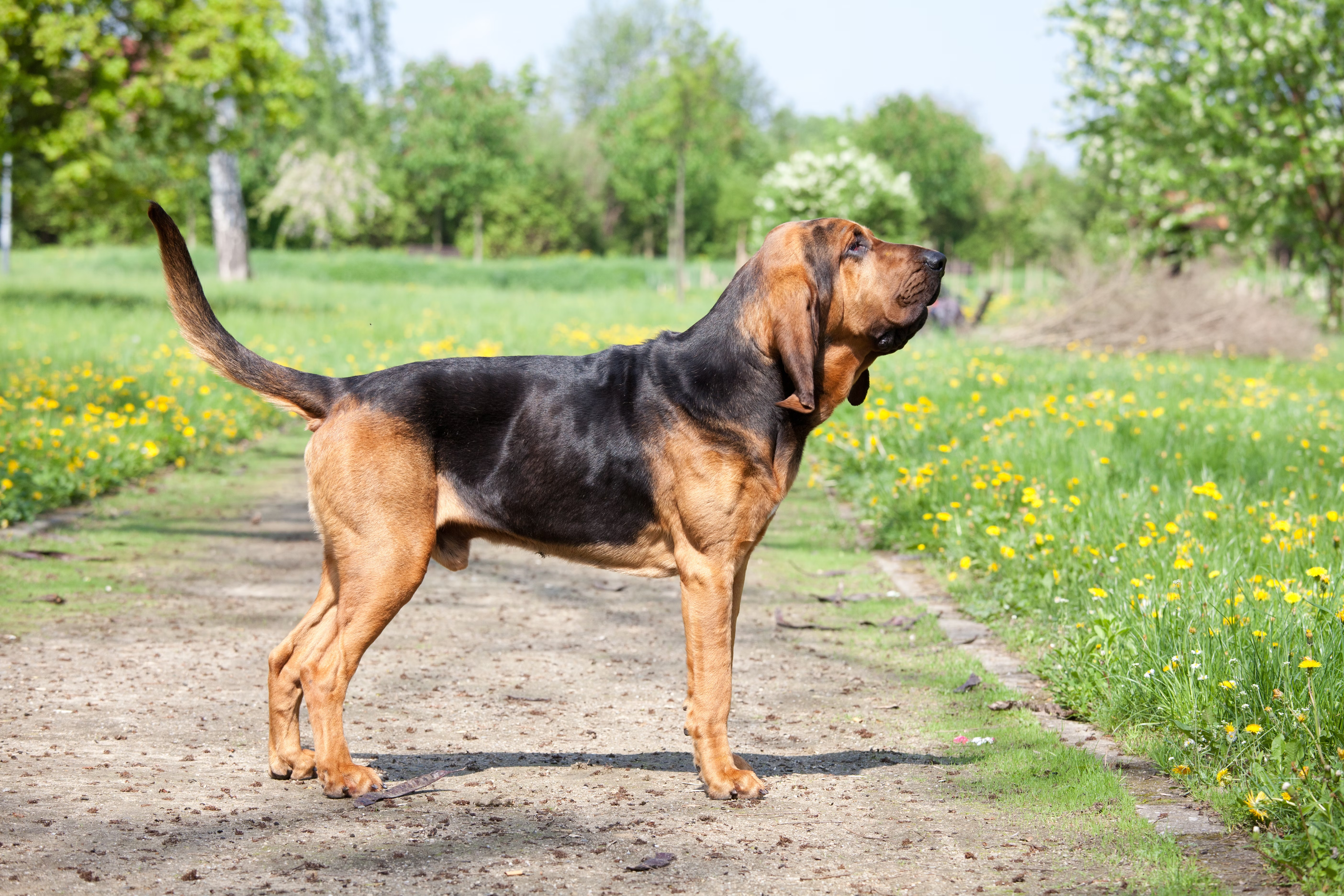
How genetics shape your dog’s voice
Vocalisation in dogs isn’t random. Its foundation is the result of evolution and selective breeding, with environment and lived experiences playing a role for individual dogs.
Wolves and wild dogs don’t bark the same way or as often as our pet dogs do. As dogs became domesticated, they learned different ways to communicate with their human companions, and that included using barking as a main form of verbal communication. As dogs were developed for specific jobs, barking—or not barking—became preferred traits for certain breeds.
For example, many hound breeds were bred to assist hunters by tracking prey and alerting with distinctive bays. On the other hand, stealthy breeds in the sighthound group or dogs bred for close companionship were often selected for quieter behaviour.
Physical anatomy plays a role, too. The size and shape of a dog’s larynx (voice box), throat, skull, and even the length of their snout can affect the types and tones of sounds they produce. Breeds with shorter snouts, for example, often produce snorting or nasal vocalisations, while long-snouted dogs may howl with more resonance.
Dog breeds known for barking
For some breeds, barking is part of the job description or their way of life. Here are some examples of breeds known to be more vocal.
- Beagles, Basset Hounds, Foxhounds, and Coonhounds were bred to track and hunt. Their barking and baying help hunters follow them through dense terrain.
- Huskies and Alaskan Malamutes come from cold climates where long-distance howling helped them communicate with their pack across snowy landscapes. They’re known for their vocal “talking”—a range of sounds from whining to dramatic “woo-woo” howls.
- Chihuahuas, Yorkshire Terriers, and other breeds in the Terrier group can be big barkers. Their alertness and energy make them excellent watchdogs and vermin hunters.
- Dobermans, and Rottweilers are from the Guard dog breed group. They’re intelligent, observant, and protective—traits that make their barking purposeful and situational. German Shepherds, while in the Herding group, also fall into this category.
- Great Pyrenees and Anatolian Shepherds were bred to protect livestock from predators. They often bark at anything they perceive as a threat, including unfamiliar animals, people, or sounds.
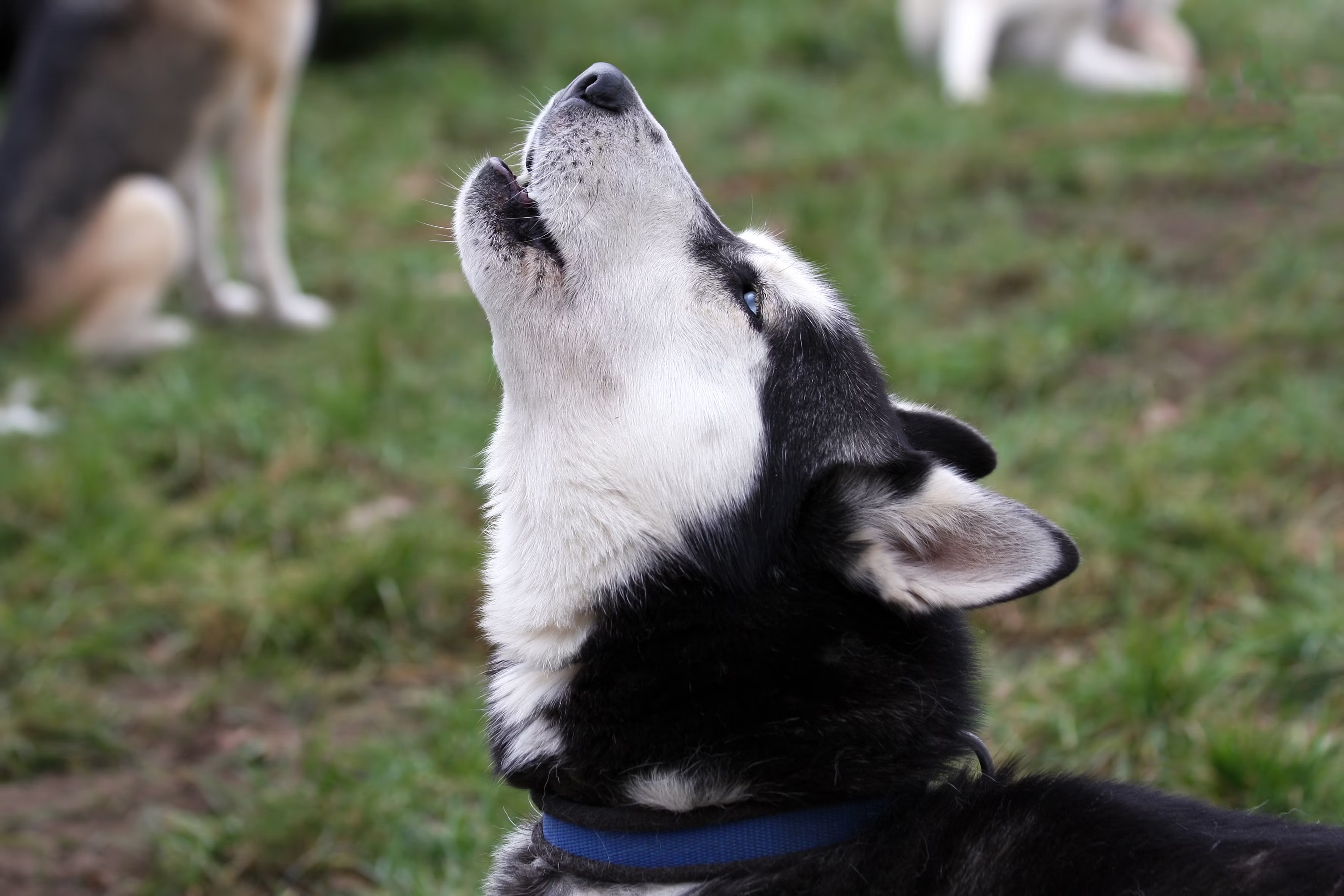
Why do dogs howl at sirens (and other strange noises)
One of the most mysterious canine behaviours is howling at sirens, music, or even harmonicas. So why do dogs howl—especially when they hear high-pitched noises?
The answer lies in their wolf ancestry. Wolves howl to communicate across long distances—to signal their location, coordinate movements, or maintain social bonds. Some dog breeds have retained more of this instinct than others. High-pitched sounds like sirens may resemble another “howl” to a dog’s ears, triggering a primal need to join in.
Some dogs also “sing” along with music or instruments, which could be a form of social bonding. In fact, our community science research found that 12% of pet parents reported their dog howls along with music.
Dog breeds that rarely bark
Not all dogs are chatty. In fact, many breeds are naturally quiet.
- Basenjis are famously known as the “barkless dog.” Due to an unusually shaped larynx, rather than barking they produce a distinctive yodel-like sound known as a “barroo.”
- Newfoundlands and Bernese Mountain Dogs were bred for rescue and drafting work. Their calm, steady demeanor often includes quiet observation rather than vocal excitement.
- Greyhounds are one of the quietest dog breeds. As sighthounds are bred for hunting by sight and speed, silence was essential to their success.
Of course, this doesn’t mean these dogs are silent. But if you’re looking for dog breeds that don’t bark a lot, these might be good ones to start with.
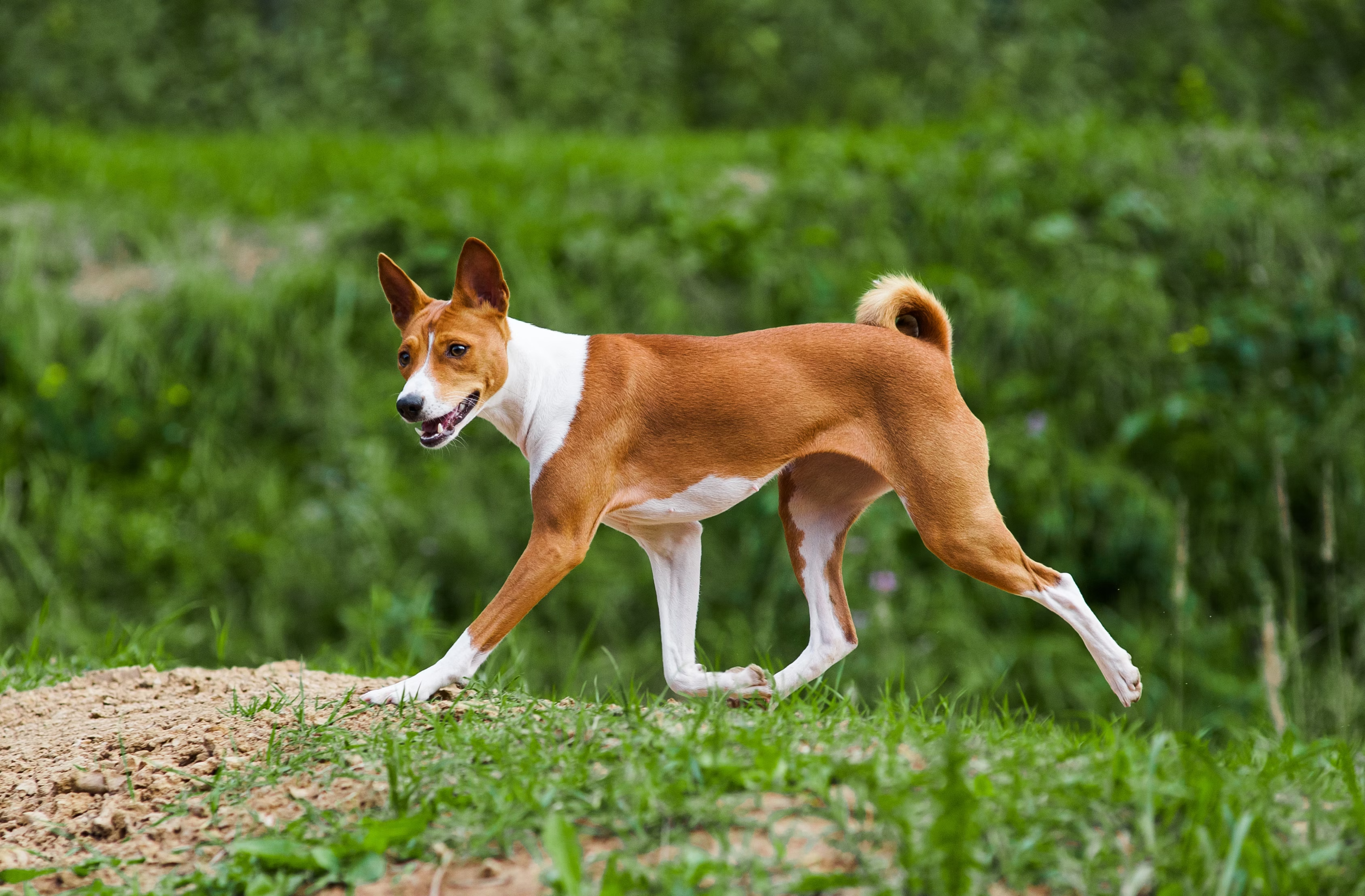
Can you train a dog to bark less or more?
While genetics provide the baseline, your dog’s environment and training also play major roles in their vocal behaviour.
If your dog barks excessively, it’s important to understand why. Many dogs bark out of boredom, stress, or lack of stimulation. Fortunately, training and enrichment can help curb this behavior. Here are a few strategies you can try:
- Reinforce calm behaviour: Reward your dog when they’re quiet in situations that would normally trigger barking.
- Increase physical and mental exercise: Puzzle toys, scent games, and longer walks can help reduce boredom barking.
- Teach cues like “quiet” or “speak”: Training your dog to bark on command (and then stop) gives you more control over their vocal habits.
On the flip side, if your dog is unusually quiet, that may just be their nature. But it’s always good to check with your veterinarian if a previously vocal dog suddenly goes silent or the sound of their bark changes, as these could be signs of an underlying health condition.
What does your dog’s DNA say about their voice?
If your dog’s vocal behaviour surprises you—like a quiet Chihuahua mix or a chatty Lab mix—breed ancestry may give you some clues. Many mixed-breed dogs inherit vocal traits from lesser-represented parts of their heritage, in addition to learned vocalisation behaviours.
A dog DNA test from Wisdom Panel™ can help uncover the breeds in your pup’s background, giving you insight into their vocal instincts, behavioural tendencies, and more.
Additional resources:
